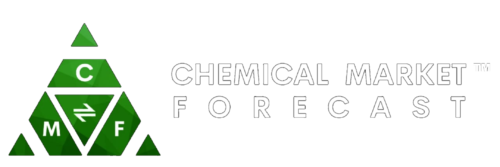France had several important contributions in the chemistry revolution, and the country plays a key role in the modern chemical industry as well. French chemical industry is ranked second in Europe and seventh globally. According to CEFIC, in the year 2018, the French chemical sector had total sales of around USD 88.5 billion. The French chemical industry has around 3,300 companies, and nearly 600 production sites. These companies offer direct employment to 166,650 people, and it generates 830,000 indirect and induced jobs. Around 75% of the output produced in France is exported to other countries. More than 60% of the chemicals manufactured are exported to countries within the European Union itself. Around 9.3% and 5.4% of the chemicals are exported to Asia and the United States of America, respectively. France exports more than it imports. The trade balance of the country indicated a large surplus worth USD 9.9 billion in the year 2014, with USD 72.9 billion exports and USD 63.1 billion imports.
The chemical sector of France manufactures a wide range of chemicals, including life science chemicals, commodity chemicals, cosmetics, perfumes, pharmaceuticals, etc. Commodity chemicals or bulk chemicals are the groups of chemicals produced in large amounts to satisfy the global demand. These chemicals are the intermediates in the production of various other end-user products.
The commodity chemicals segment of the industry has 30 companies in France, generating employment for more than 500 people. Bulk petrochemicals constitute a major proportion of the French commodity chemicals market. Several commodity chemicals companies are headquartered in France, including Saint Gobain, Air Liquide, Total Petrochemicals, and Kem One. France has also attracted foreign investment from various international chemical companies. These foreign companies account for 40% of the country’s chemicals production, and around 50% of the chemical companies. These foreign companies offer jobs to more than 250 people. The foreign companies include some from Europe, like Ineos, Yara International, BASF, Bayer, Borealis, and Solvay, and various American companies including ExxonMobil Chemical, Dow Chemical, Lyondell Basell.
Leading chemical suppliers
Air Liquide is the world’s second-largest industrial gas manufacturer. It supplies industrial gases to several industries, including medical, electronics, and the chemical industry. The industrial gases produced by Air Liquide include oxygen, hydrogen, and carbon dioxide. These are important molecules, which are used as reaction agents for various steps in the chemical production chain. Nitrogen is an essential industrial gas, having various applications like purging, cooling, and creating an inert atmosphere. Total Petrochemicals manufactures polymers and commodity chemicals. The Petrochemicals produces propylene, ethylene, polyethylene, benzene, polystyrene, polypropylene. These chemicals have a wide range of industrial and household applications. They have developed the first polystyrene production site in the country. Kem One is among the largest chemical producers in the country. Kem One manufactures several commodity chemicals or intermediate chemicals, that are further used in the pharmaceutical, agriculture, construction, and packaging sectors. Kem One is the second-largest polyvinyl chloride producer in Europe. Some of the key chemicals produced by Kem One are chlorine, caustic soda, chloromethane, PVC mass and suspension, emulsion PVC, and C-PVC.
BASF also an important foreign chemical company in France. Along with several other compounds, it also manufactures varied bulk chemicals. Some of the most important chemicals produced are hydrochloric acid, nitric acid, sodium bisulfite solution, etc. The chemicals manufactured by BASF are also used in the fertilizer and the pharmaceutical industry. ExxonMobil Chemicals France is another company playing a key role in the chemical sector of the country. The chemicals produced by ExxonMobil Chemicals have applications in the automotive, agricultural, oil, and packaging industries all around the world.
Chemical clusters in the country
Roughly 30 competitive chemical clusters are located within this region. These include ELASTOPOLE in Centre-Val de Loire (Orléans), AXELERA in Auvergne-Rhône-Alpes (Lyon), and EURAMATERIALS in Hauts de France (Villeneuve d’Ascq). PLASTIPOLIS in Auvergne-Rhône-Alpes (Oyonnax), IAR in Hauts de France (Laon), and XYLOFUTUR in Nouvelle Aquitaine (Bordeaux) are some of the other main chemical clusters. Auvergne-Rhone-Alpes was established as the first region in France for the production of chemicals. It employs more than 32,000 people, ranking second in the country. The total turnover of this region was valued at more than USD 21.72 billion in the year 2018. It is located between Southern and Northern Europe, enabling good local transport links and connections to the Swiss, German and Italian markets. It is the country’s main olefin provider with refinery and steam cracker plants. The chemical market in Hauts de France is a key sector of the region’s economy. This region consists of 470 enterprises, with more than 29,640 employees. More than 66% of the companies in this region are involved in research and development programs. The location of this region enables easily accessible ports and various logistic platforms, including rail and road. This helps the region retain a wide variety of activities and helps in the export of 60% of its production.
Investments in the chemical sector
The French chemical sector has played a key role in innovation and continues to invest a large amount of its revenue in research and development. Around USD 2.24 billion was invested for research and development in 2018. Around 12,000 people are involved in R&D in France, including nearly 5,500 Ph.D. researchers. This represents more than 8% of the entire French industrial research spending. The capital investment in the year 2018 was around USD 3.66 billion. Around 72% of the investment was utilized for safety, modernization, and environmental improvements. The public authorities and stakeholders in the chemical sector have developed various tax-incentive programs to support R&D in chemistry. In 2011, Comité Stratégique de Filière Chimie et Matériaux (CSF), a strategic council for the chemical sector was established. The main aim of this council was to bring together customers, public authorities, and industry to develop social, technical, and economic conditions favorable to the competitive development of this industry. The industry has taken part in the global effort to reduce greenhouse gas emissions. The chemical sector in France has reduced total greenhouse gas emissions from 53.9 million tons of carbon dioxide in 1990 to around 26.9 million tons in 2012. The Planning Committee for Chemicals and Materials has developed a plan for the chemicals industry that focuses on sustainability. This committee aims to develop an economy focused on renewable energy, its resources, and recycling.

